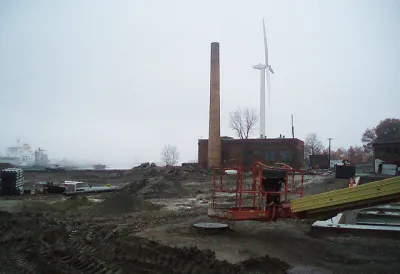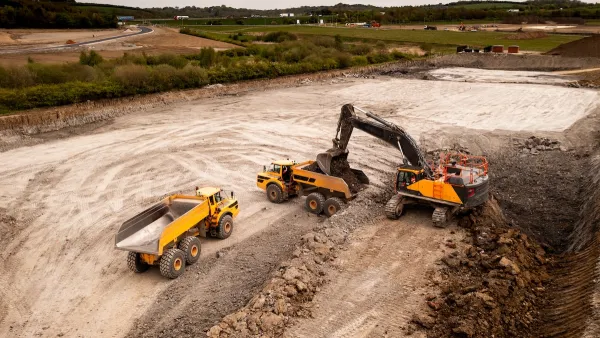A series of reports published by the U.S. Environmental Protection Agency and Smart Growth America highlights tools and policies that can help mitigate displacement pressure when recovering and developing brownfields around the United States.

Smart Growth America (SGA) and the U.S. Environmental Protection Agency’s Office of Brownfields and Land Revitalization recently created a set of anti-displacement fact sheets.
The fact sheets “highlight strategies communities can use to help mitigate displacement in the context of brownfields redevelopment,” according to an article by Jared Klukas. “Although there are many approaches to mitigating displacement during and after the completion of a brownfield redevelopment process, many communities may be unfamiliar with specific tools or how they can be implemented.”
The list of fact sheets reveals some of the tools explored as options for anti-displacement measures connected to brownfield mitigation and development. Titles include “Community Benefit Agreements,” “Community Land Trusts,” “Inclusionary Zoning,” “Small Business Preservation,” and “Tax Abatement.”
The fact sheet for inclusionary zoning (IZ), always a hot topic in planning debates, lists the benefit of the tool as the maintenance of affordable housing and housing affordable for a range of incomes in context of rising housing prices. “Research shows that inclusionary zoning programs are most effective when they are mandatory and coupled with incentives that encourage development. Incentives used to attract and encourage IZ programs for developers include density bonuses, fee waivers, parking reductions, and more streamlined and expeditious permit approval processes,” reads the fact sheet.
To create the fact sheets, the organizations conducted interviews with community groups and municipal leaders from across the country for insight into what works and what doesn’t.
FULL STORY: Anti-displacement fact sheets for communities undergoing brownfields redevelopment

National Parks Layoffs Will Cause Communities to Lose Billions
Thousands of essential park workers were laid off this week, just before the busy spring break season.

Retro-silient?: America’s First “Eco-burb,” The Woodlands Turns 50
A master-planned community north of Houston offers lessons on green infrastructure and resilient design, but falls short of its founder’s lofty affordability and walkability goals.

Delivering for America Plan Will Downgrade Mail Service in at Least 49.5 Percent of Zip Codes
Republican and Democrat lawmakers criticize the plan for its disproportionate negative impact on rural communities.

Test News Post 1
This is a summary

Test News Headline 46
Test for the image on the front page.

Balancing Bombs and Butterflies: How the National Guard Protects a Rare Species
The National Guard at Fort Indiantown Gap uses GIS technology and land management strategies to balance military training with conservation efforts, ensuring the survival of the rare eastern regal fritillary butterfly.
Urban Design for Planners 1: Software Tools
This six-course series explores essential urban design concepts using open source software and equips planners with the tools they need to participate fully in the urban design process.
Planning for Universal Design
Learn the tools for implementing Universal Design in planning regulations.
EMC Planning Group, Inc.
Planetizen
Planetizen
Mpact (formerly Rail~Volution)
Great Falls Development Authority, Inc.
HUDs Office of Policy Development and Research
NYU Wagner Graduate School of Public Service




























